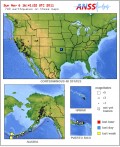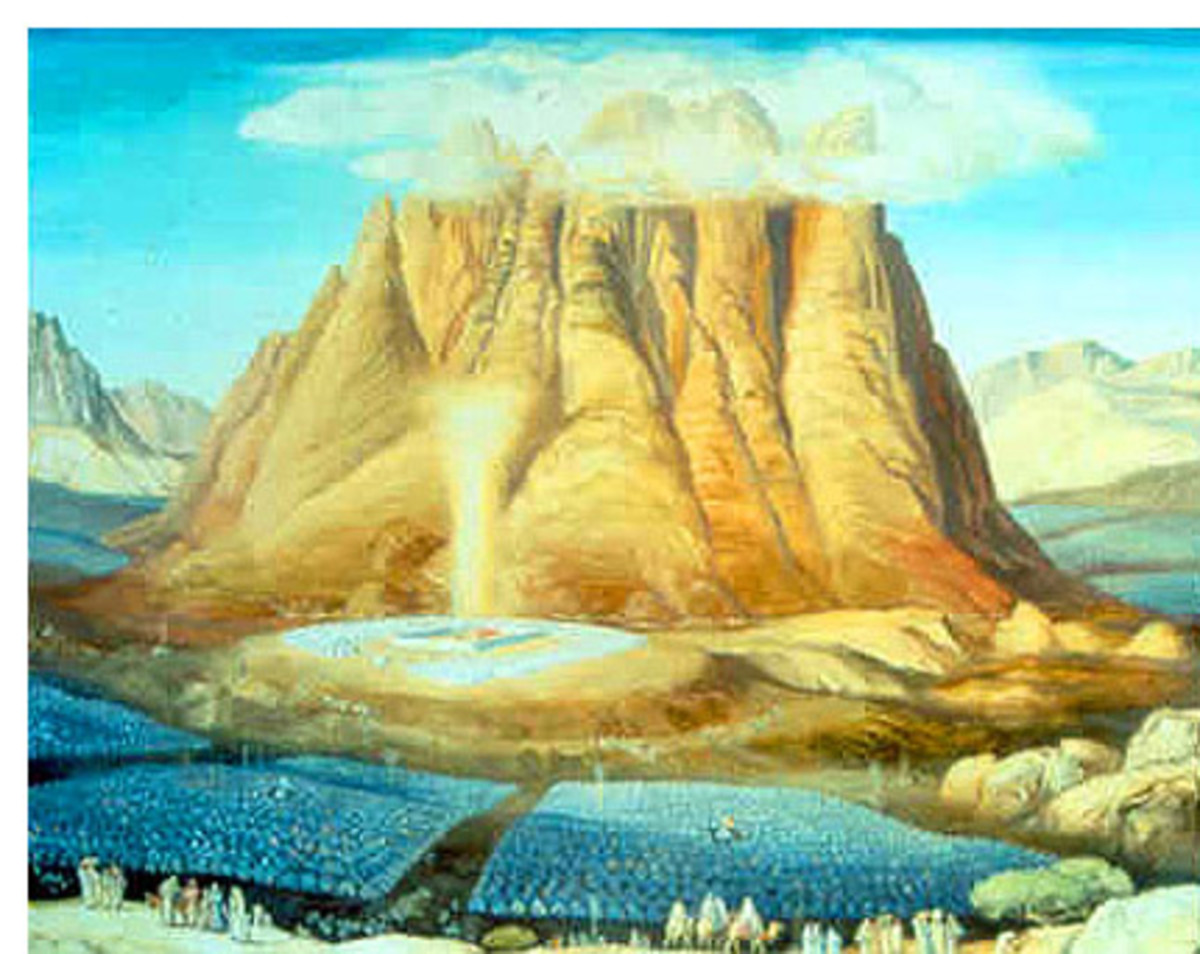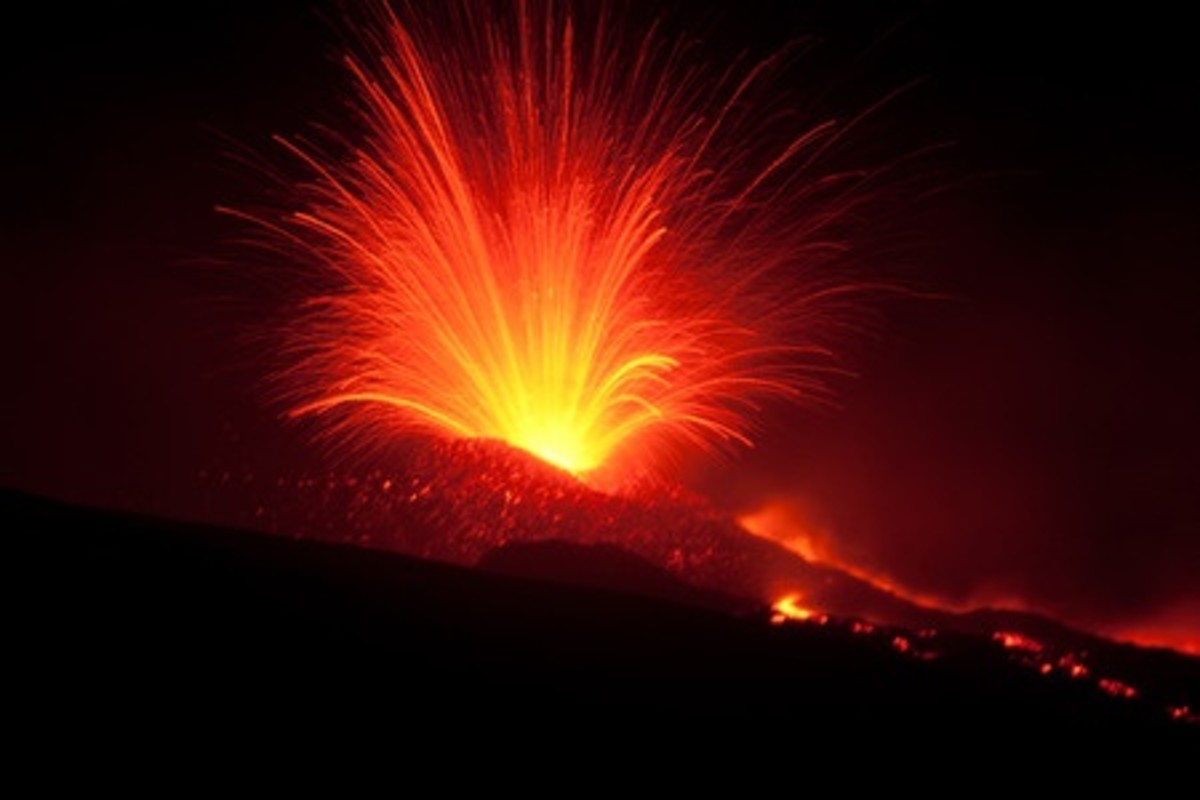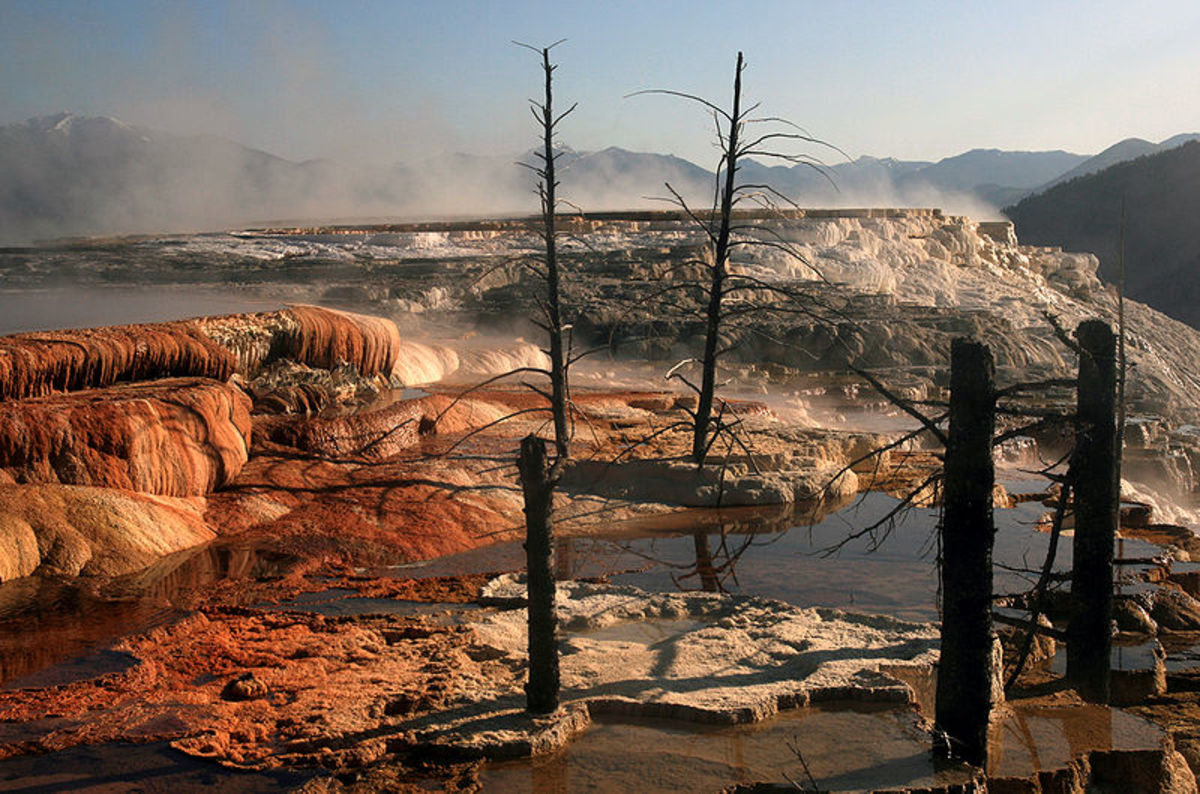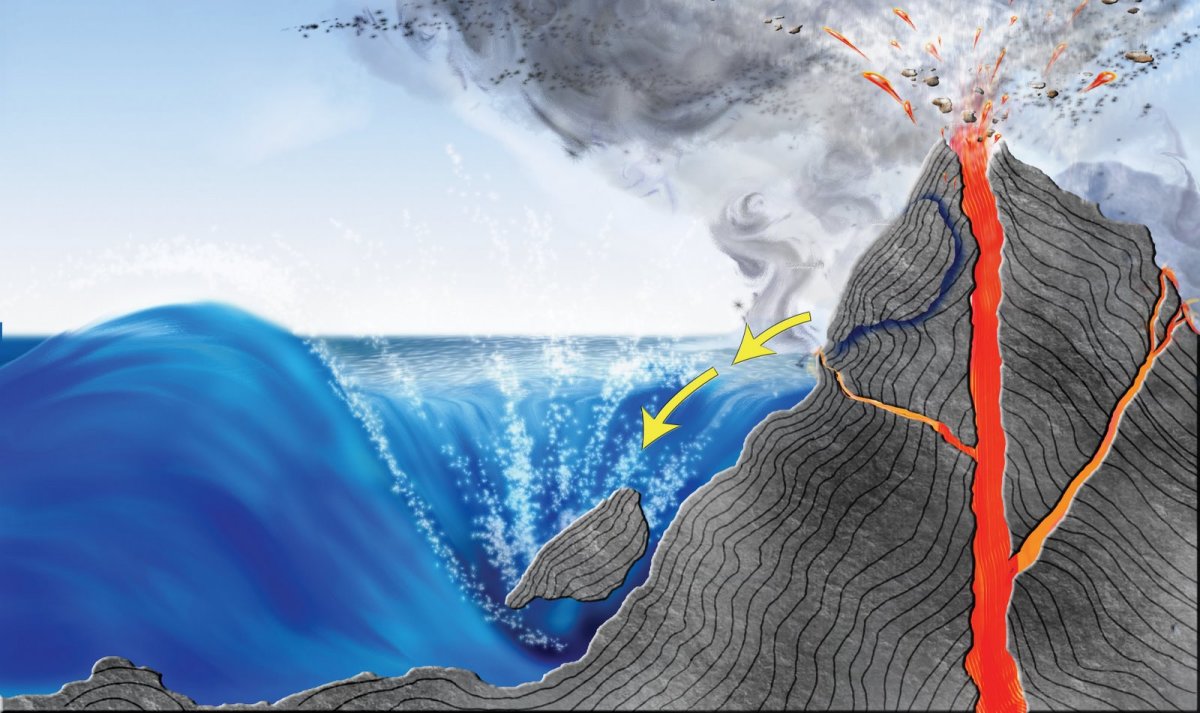Big Quakes Due in Spring 2017
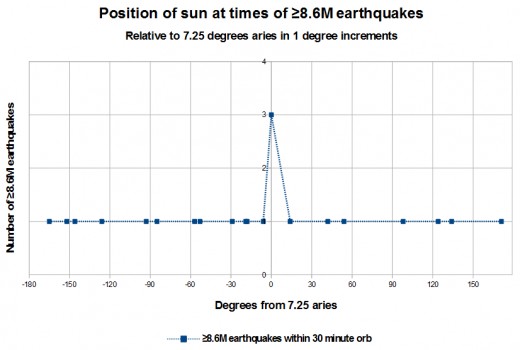
Celestial Aspects Paralleling Rare Seismic Events of the Past
As Maxwell Smart would often ask the Chief in the TV comedy series Get Smart, “Would you believe...?” Well, I am going to ask you all to suspend disbelief for at least the length of this short article. What I am about to present to you is the possibility that there is a 45 times greater chance of an 8.6 magnitude or greater earthquake occurring somewhere in the world in any of three five-day window periods this spring.
That may sound like a lot, but the chances of such an event happening during any five day period is usually only 1 chance in 603 (based on USGS data for 1918-2016). What will happen during one of the windows that I will be describing is the chances will increase to 1 in 13.4.
Let me explain the situation in more detail so you can get the big picture. Beginning in the year 1787, and lasting 219 years, three earthquakes of at least 8.6 magnitude occurred on one day of the month. That day was the 28th of March. The average period of time between each of those earthquakes is 40,000 days. Normally there are 16 such quakes in 219 years and they are spaced 5,000 days apart on average. But that is for a quake that can fall on any day of the year, not the same day.
Two very rarely occurring earthquakes happening on the same calendar day may not be totally unheard of, but it has to be considered a potential anomaly. Having them happen 3 times on the same date has to be a real peculiarity. In other words, I gather that the odds are likely on the order of getting a straight flush in a game of seven card stud poker.
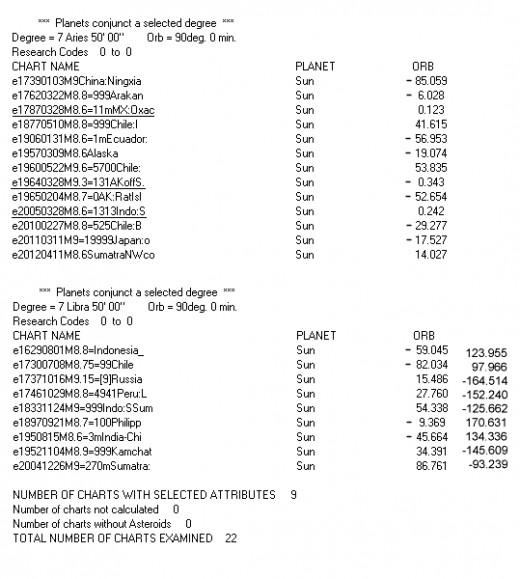
If you look at the above Table for 22 earthquakes of 8.6 magnitude or larger which occurred during a 376 year period it is shown that there was only one date that had more than one of these large earthquakes occurring. One of those earthquakes happened to be the 2nd largest earthquake ever recorded. That would be the Anchorage, Alaska earthquake of 9.2 magnitude which happened on 28 March 1964 (all dates are in Greenwich Mean Time). The dates and times of these seismic events correspond to the sun being within half of a degree of 7° 50' of Aries.
First the Sun and Then the Moon to Play Leading Roles
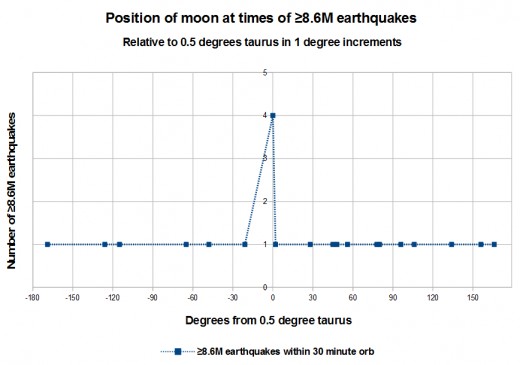
Another anomaly occurred on the day of the year when the largest earthquake ever was recorded. That earthquake was the 9.5 magnitude temblor that rocked the world on May 22, 1960. However, it isn't the day of the year but rather the degree that the moon was in that is the recurring theme in this case. At that time, the moon was two days away from a New Moon and also was positioned at 1° 08' of Taurus. A total of four huge quakes have occurred when the moon was within half of a degree of 1 degree of that sign; the first one in the year 1730 and the last one in 1960. That averages out to one such quake every 76.7 years or once every 28,000 days.
Normally, there are 14 quakes within a 230 year period, but if we settle on the more commonly given estimate of magnitude 8.8 for the 31 January 1906 earthquake (rather than the more conservative 8.6 magnitude estimate used in the table below) there would be 10 such sized mega quakes. That comes out to one seismic event of at least 8.8 magnitude occurring every 8,400 days on average.
One difference between the two "luminaries" (as the Sun and Moon are called in astrology) is that the Moon completes its travel around the zodiac 13 times during the same time that the Sun takes to do so once. What this means, along with the other factors mentioned above, is that the Moon is roughly 3.6 times more likely to be in the 1st degree of Taurus than the Sun is to be in the 8th degree of Aries. As a result, my estimate, relative to the one I came up with for the sun, would be multiplied by 3.6 before being divided into the number of earthquakes within orb. The end result is then that there would be a significant seismic event when the Moon is at 1 degree Taurus (give or take half of a degree) 15 times more often than the expected average.
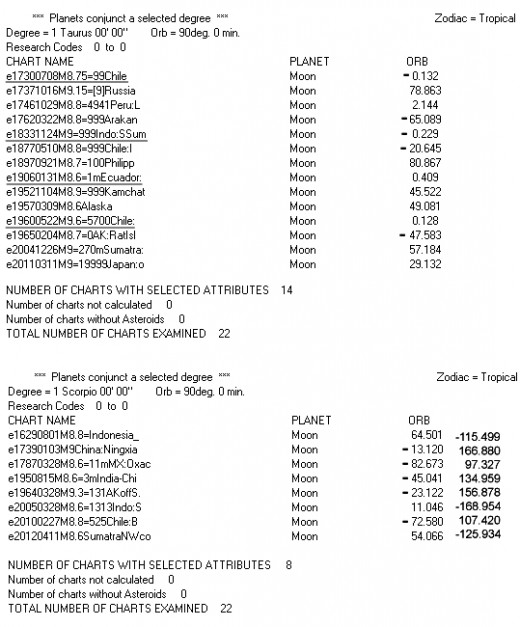
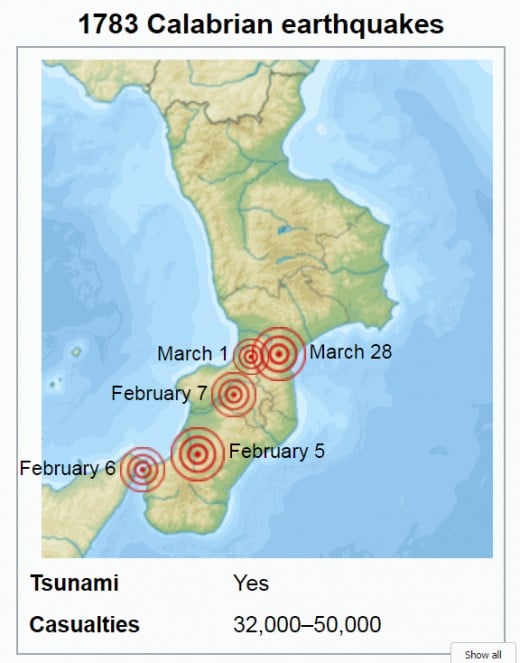
A Recurring, Periodic Theme (Not Just a Fluke)
Returning to the first anomaly involving the Sun at approximately 8 degrees Aries where it lands on March 28 (±1 day), that is not the only day of the year where there is a much greater chance of a significant seismic event occurring (it is just the date with the greatest chance of an occurrence). Other days are the 9th to the 10th of July (corresponding to 17° 25' of Cancer, ±1° 5'), the 4th and 5th of February (corresponding to 15° 59' of Aquarius, ±1° 18'), and the 16th of December (corresponding to 24° 8' of Sagitarius, ±49'). What is pretty unusual and amazing about these dates is that a length of 51 to 52.25 days can be divided into the space between each of them. More precise and impressive is the fact that, taking the medians of the Sun's position at the time of the earthquakes that occurred on these dates, the difference in longitude between 16 December events and 4th to the 5th of February events is 51° 51' and the difference between the 4th and 5th of February and the 28th or 29th of March is 51° 58'. What this implies is a periodicity similar to the division of the circle by 7, with peaks on 4 dates out of a possible of 7 dates that correspond to those divisions.
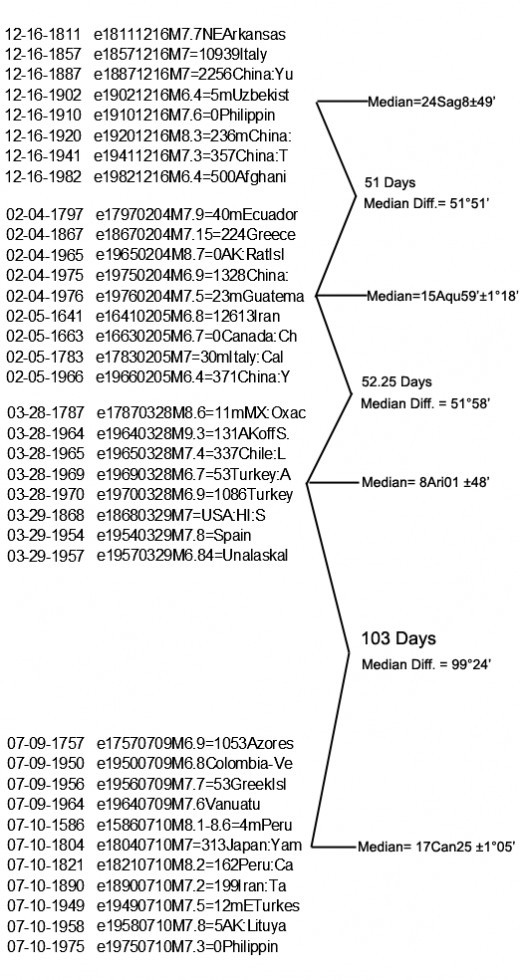
Hope for the Best, but Prepare, Just in Case...
Tied in with what I have just presented is that this spring will have the Sun at 8 degrees of Aries at just before 1200 UT on March 28, 2017, or an hour after there will be a substantial peak in Astro-Aspect Values or AAV's (at 1056 UT on that date). At that time, the peak in AAV's will be more than three times greater than the base line value, also known as the mean or average, of 10.6 AAV's. The AAV's represent groups of aspects that have shown a relationship or correlation to past significant earthquakes (those of at least 6.5 magnitude or causing at least 50 deaths).
Also, the Moon will be at 1 degree Taurus on April 26th and May 23rd, 2017, when there will be peaks in AAV levels that are more than four times greater than the base line value. These will be days to watch out for in the coming months. Dates that should parallel the occurrence of significant seismic events of at least 7.0 in magnitude. But there is also a very good likelihood that one or two quakes of 7.8 magnitude or greater will fall on one or more of those dates (or within 1.5 days before to 3.5 days following each one).
Since an AAV value of 4 times greater than the baseline value has 3.5 times the likelihood of a significant seismic event occurring than an AAV peak of 3 times greater than the baseline and the lunar effect (last 2 dates) has about one third the potential of the solar effect (first date), all the factors yield about the same likelihood of occurrence. As a result, my estimate of the probability of significant seismic events on any of the three possible 5 day peak windows forecast in this article are as follows. I am rating the chances of an earthquake of at least 7.0 magnitude at 69%, for one of at least 7.8 magnitude at 38% and for one of at least 8.6 magnitude at 7.5%.
Looking at the probability of one of these three size of quakes occurring on just one of the three possible 5 day peak windows forecast, the probability is as follows: For a 7.0 or greater earthquake it would be 97%, for a 7.8 magnitude or greater earthquake it would be 76%, and for an 8.6 magnitude or greater quake it would be 27%.
Considering all the above, if you are in a seismic environment that is due for a sizable earthquake, it would be prudent to prepare for the worst in case of such an eventuality.
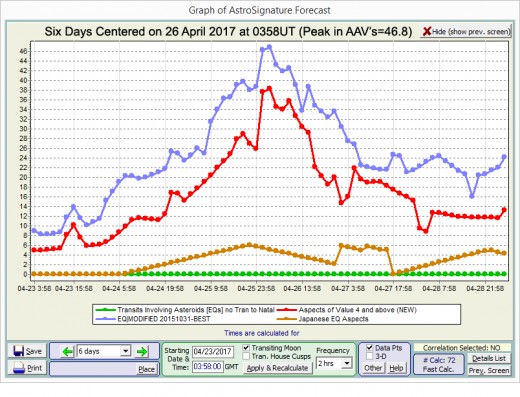
This article is accurate and true to the best of the author’s knowledge. Content is for informational or entertainment purposes only and does not substitute for personal counsel or professional advice in business, financial, legal, or technical matters.
© 2017 Joseph Ritrovato



